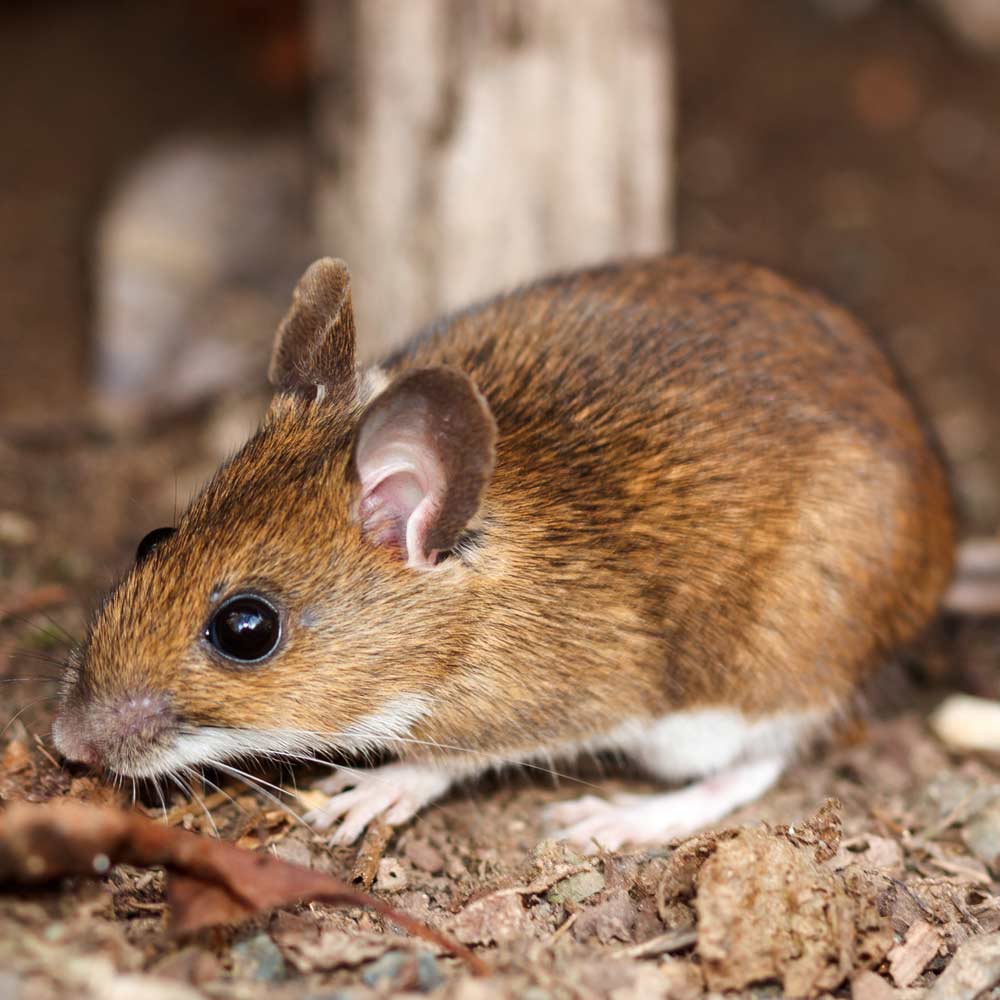Always Vigilant: White-footed Mice
The Great Outdoors | January 3, 2022

By Jackie Scharfenberg, Forest Naturalist, Wisconsin Department of Natural Resources
Did you hear that?
My big round ears heard the whinny of a screech owl. Sniff, sniff. Moments ago, a weasel passed nearby. My beady black eyes spied a red fox sneaking behind the dogwood bush. We, white-footed mice (Peromyscus leucopus), may be the most abundant small rodent in the forest, but it seems every bigger animal wants to eat us! That means as we sneak through the night, we must remain diligently alert all the time.
Our brown to reddish-brown back and white belly, throat, and feet provide camouflage as we skitter through the forest, brushland, backyards, and farm fields. Our long tails help us balance when climbing bushes and trees. We even swim well. We use our vibrissae (whiskers) as touch receptors which really helps when moving through tight spaces in the dark.
White-footed mice prefer to live alone, and we defend our acre-sized territory from all intruders. Often territories overlap allowing males to breed with several females. Many times, pups of a litter have different fathers.
Our females produce their first litter at 44 days old and can deliver two to four litters of two to nine young each March through October. That’s a lot of babies! They find a warm, dry, secret spot such as a hollow tree, abandoned bird nest, or stone wall in which to build their cozy nests. Nests consist of a loose round mass of plant material with a hollow center. The interior are with animal hair, milkweed silk, or other soft stuff. The nests are abandoned when they become completely soiled with urine and a new one is built.
If you invite us for dinner, I’ll let you know that we are not picky eaters because we’re omnivores. We love seeds, berries, nuts, insects, grains, fruit, and fungi. In autumn, we cache seeds and nuts in and close to our nests. Good locations include under logs, small burrows, and old bird nests.
Those stores help us get through the winter, especially since we remain active throughout the season. On those very cold nights, we curl up in our burrow and enter a period of torpor, a deep sleep. Our heart rate goes from 700 beats per minute to just 60 beats. Our burrows are very clean, neat, and highly organized. We have separate places for sleeping, storing food, and going to the bathroom.We possess an amazing sense of directions and can find our way home from two miles away. This comes in handy since we are very curious and love to explore and investigate new locations.
If you listen closely you may witness one of our mysteries. Using our fore paws, we drum on a hollow reed or dry leaves creating a prolonged musical buzzing. Humans don’t know what it means, and I am not telling. You may also hear us scratching or scampering. We also drum our front feet on the ground when threatened.
Listen! The barred owl is on the prowl, so I gotta run before I become its next meal.



